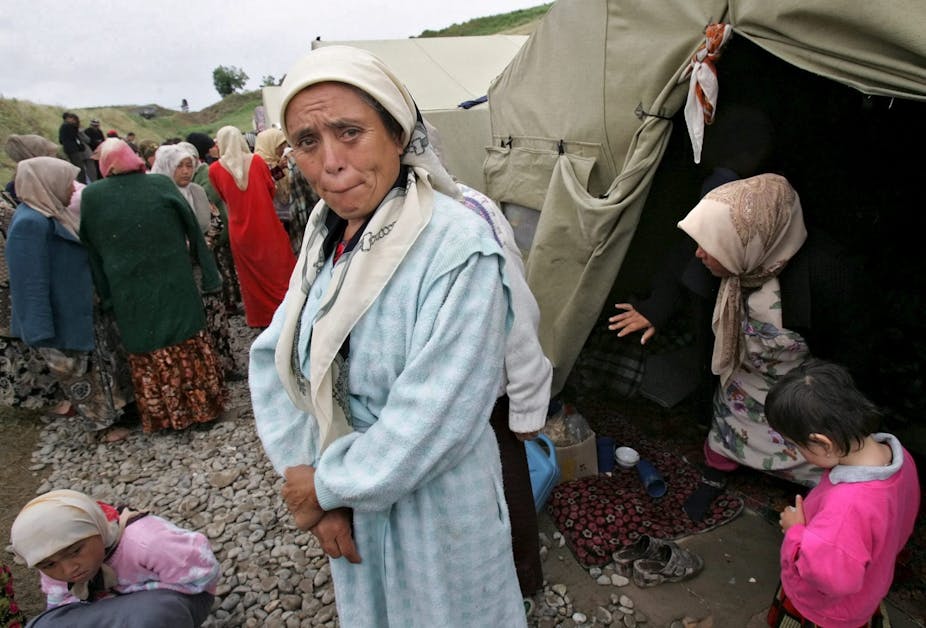Crossing borders is far more dangerous for some. The facts are that women and children are more likely to die crossing borders in environmentally hazardous conditions than men.
When boats sink or encounter difficulties between Indonesia and Australia, crossing the desert between the US and Mexico or across the Mediterranean into Europe, women and children face far more risks.
Recently stories of increasing numbers of pregnant women dying during these crossings are making their way into the mainstream press. Last week’s asylum boat drownings off Christmas Island claimed the lives of a woman and young boy. But this is not just the story of women and children pitched against the environment.
Those environmentally hazardous journeys are overwhelmingly undertaken because of the lack of legalised options for entry into Australia, the US or Europe. They are the result of what is known as border hardening – the fortification of borders making them all but impossible to cross but in some of the riskiest places.
Border hardening disproportionately impacts women and children for a range of reasons, including - but not limited to - lower levels of swimming ability, their location below deck, the clothes they are wearing, their vulnerability to sexual violence during crossings, and succumbing to exposure and hyperthermia sooner than men.
Seas, deserts, rivers, and mountain ranges have all been harnessed as what former US president Bill Clinton referred to as “allies” in deterring irregular migration. Following the intensification of border control in the United States in the mid-1990s, migrants were funnelled into the most inhospitable terrain in the hope that those seeking to cross the border would undertake an elaborate calculation of risk and choose against making the crossing.
The hope was that stories (and indeed, sightings) of drowning victims and the decaying bones of those who had failed before them would serve to deter similar attempts. The authorities hoped those who lost their lives would prove a general deterrent to any that might follow. And that those who were proximate to lives lost would be individually deterred from repeat attempts.
But in Australia, the United States and Europe, the data reveals a very different story. The risk calculations undertaken by irregular migrants are simply not the same as those designing and implementing policy. The hazardous environments have remained uncooperative: they claim lives and they fail to deliver deterrence outcomes. The calculations don’t add up.
In the meantime what occurs on the high seas raises many questions regarding the operation of border control. In the most recent Christmas Island incident of a young boy and woman dying at sea there are questions to be answered in relation to the duty of care of border protection staff. These question must be asked by a coronial inquiry, and in the context as to why we pursue policies which depend on migration management being played out on a big grey boat in the middle of nowhere.

The invidious position of border protection personnel is emblematic of how so many are left to sort out the very human consequences of failed macro-level policies. The existing architecture of refugee policy is unworkable for its inability to put human security at its core.
If concern for human security and a rational approach to permanent and temporary migration were its bedrock, refugee policy would look very different. As Australia takes up its seat at the UN Security Council, these policies need to demonstrate far more engaged and practical concern for the regional operation of security and of Australia’s part in the coming “Asian century”.
As the people charged with patrolling our border are further required to rescue asylum seekers and deaths in custody inevitably grow, the impetus for the kind of paradigmatic shift needed again becomes apparent. This was the kind of shift that alluded the Houston panel, but one that ought be made to keep asylum seekers safe on the treacherous journeys they make.

